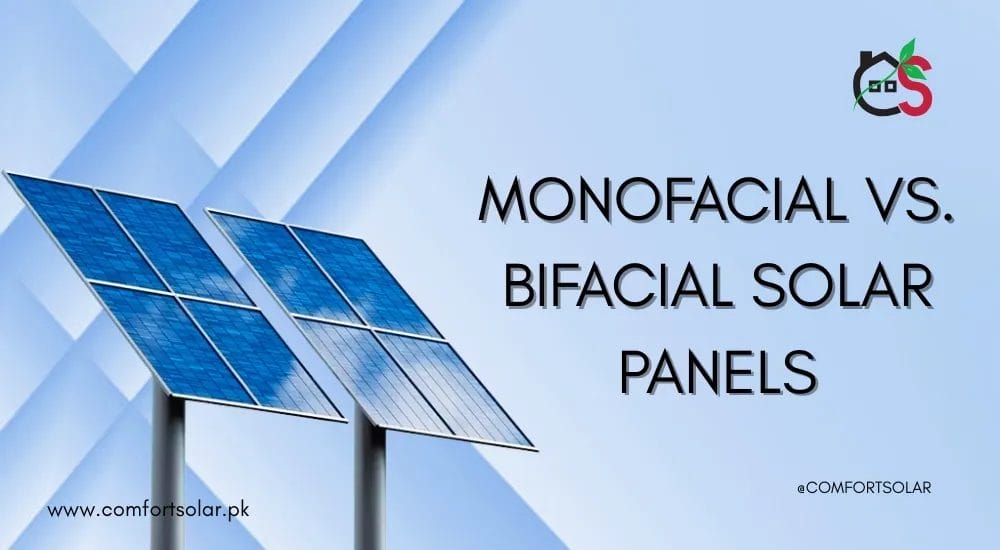
- 0316 622 5526
- Comfort Solutions Pvt Limited
Account

In today’s solar market, the choice between monofacial and bifacial panels can make a big difference in energy production and long-term savings. At Comfort Solar, we help you understand the smart choice for your home or business—so your investment pays off in the best way.
Monofacial panels are the most commonly used type of solar panel. They absorb sunlight from the front side only. These panels are reliable, well-tested, and continue to power millions of systems globally. Most residential rooftops in Pakistan still use monofacial panels because of their simple design and solid performance.

Bifacial panels absorb sunlight from both the front and the back. The rear side captures reflected light—also called “albedo”—from the surface below, increasing overall energy production. In many cases, bifacial panels are not only more efficient but also similarly priced or even cheaper, thanks to increasing availability in the global market.

Light absorption
Front side only
Front + back side
Energy output
Standard
10–20% higher
Installation
Standard structures
Standard structures
Cost
Moderate
Often similar or lower
Best for
Homes, rooftops
Homes, rooftops, carports, etc.
Not at all. One common misconception is that bifacial panels need custom or elevated mounting systems. In reality, they can be installed on the same regular mounting structures used for monofacial panels. However, their energy gain is better when there’s more reflected light from below—like on light-colored or reflective surfaces.
It’s often assumed bifacial panels only work well in open, elevated areas. But the truth is, they perform efficiently across a wide variety of environments—including standard rooftops, carports, and commercial setups. Their ability to capture light from both sides gives them a performance edge, even in semi-shaded or tight urban spaces.

Thanks to higher efficiency and increasing availability, bifacial panels often deliver better long-term value. You get:
More energy output per panel
Greater return on investment over time
Competitive or even lower pricing in some markets
But if your solar needs are moderate, and you have limited surface reflection, monofacial panels still provide excellent results.
Both monofacial and bifacial solar panels are excellent options—and the right choice depends on your space, energy goals, and overall setup. Bifacial panels deliver higher performance and are now more accessible and affordable than ever. They work well in a wide range of environments, not just open areas. Monofacial panels remain a trusted, efficient solution for many rooftops and continue to deliver strong results.
At Comfort Solar, we don’t just install panels—we build custom solar systems that fit your needs, your site, and your budget perfectly.
📍 Learn more or book a free solar consultation at: comfortsolar.pk
WhatsApp us
One Response
very informative 😮